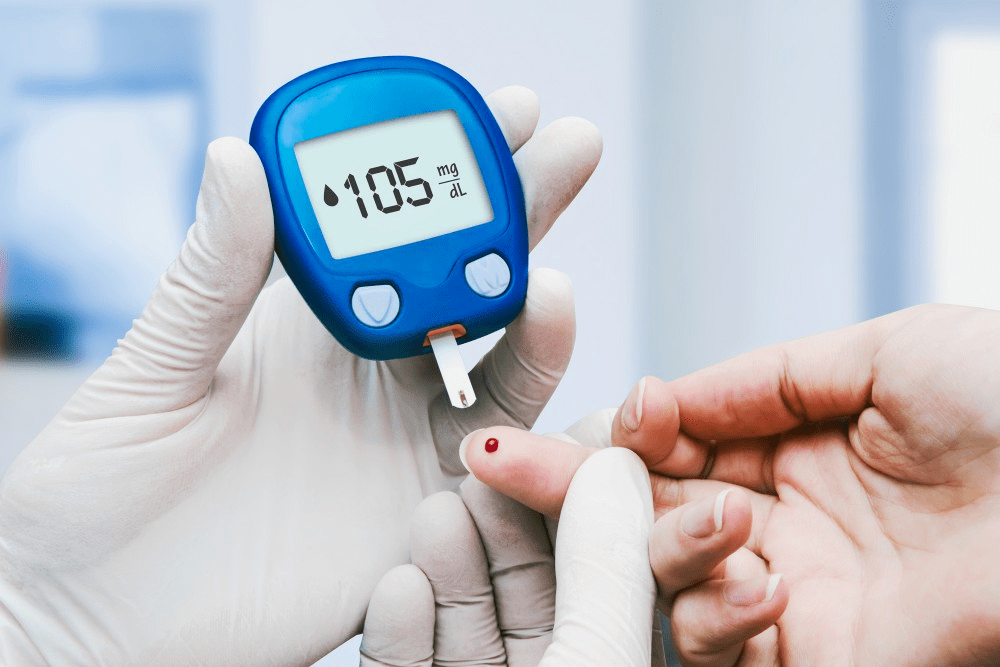More News
Low blood sugar, also called hypoglycemia, is a dangerous medical condition. If you don’t recognize the symptoms or regularly and vigilantly monitor your blood sugar level, you can quickly face serious and potentially fatal consequences. Here is what you need to know, what to look for, and what to do about hypoglycemia to keep yourself […]
learn moreType 2 diabetes never rests. That is why managing the condition requires thoughtfulness, planning, and vigilance throughout the day. But in the evenings, diabetes can cause problems with sleep. In turn, a lack of sufficient and quality sleep can have a negative impact on overall health. Fortunately, people with diabetes can minimize disruptions to sleep […]
learn moreEvery day in the United States, someone receives a diagnosis of type 2 diabetes. The news can land like a ton of bricks, raising a whole host of emotions and worries about what life will be like with a condition that requires careful management, thoughtful planning, and lifestyle changes, likely for the rest of one’s […]
learn more*Fingersticks are required for treatment decisions when you see Check Blood Glucose symbol, when symptoms do not match system readings when you suspect readings may be in accurate, or when you experience symptoms that may be due to high or low blood glucose.
Reference 1: Data on file. Abbott Diabetes Care. 2, FreeStyle Libre 14 day User’s Manual
Indications and Important Safety Information
FreeStyle Libre and FreeStyle Libre 14 day Flash Glucose Monitoring systems are continuous glucose monitoring (CGM) devices indicated for replacing blood glucose testing and detecting trends and tracking patterns aiding in the detection of episodes of hyperglycemia and hypoglycemia, facilitating both acute and long-term therapy adjustments in persons (age 18 and older) with diabetes. The systems are intended for single patient use and require a prescription.
CONTRAINDICATIONS: Remove the sensor before MRI, CT scan, X-ray, or diathermy treatment.
WARNINGS/LIMITATIONS: Do not ignore symptoms that may be due to low or high blood glucose, hypoglycemic unawareness, or dehydration. Check sensor glucose readings with a blood glucose meter when Check Blood Glucose symbol appears, when symptoms do not match system readings, or when readings are suspected to be inaccurate. The system does not have alarms unless the sensor is scanned, and the system contains small parts that may be dangerous if swallowed. The system is not approved for pregnant women, persons on dialysis, or critically-ill population. Sensor placement is not approved for sites other than the back of the arm and standard precautions for transmission of blood borne pathogens should be taken. The built-in blood glucose meter is not for use on dehydrated, hypotensive, in shock, hyperglycemic-hyperosmolar state, with or without ketosis, neonates, critically-ill patients, or for diagnosis or screening of diabetes. When using FreeStyle LibreLink app, access to a blood glucose monitoring system is required as the app does not provide one. Review all product information before use or contact Abbott Toll Free (855-632-8658) or visit www.freestylelibre.us for detailed indications for use and safety information.html. . FreeStyle, Libre, and related brand marks are trademarks of Abbott Diabetes Care Inc. in various jurisdictions. Other trademarks are the property of their respective owners. ©2018 Abbott. ADC-09691 vLO 10/18
*The FreeStyle LibreLink app and the FreeStyle Libre 14 day reader have similar but not identical features. Fingersticks are required for treatment decisions when you see Check Blood Glucose symbol, when symptoms do not match system readings, when you suspect readings may be inaccurate, or when you experience symptoms that may be due to high or low blood glucose.
The FreeStyle Libre 2 app and the FreeStyle Libre 2 reader have similar but not identical features. Fingersticks are required for treatment decisions when you see Check Blood Glucose symbol and when your glucose alarms and readings from the system do not match symptoms or expectations
‡‡‡Based on the sensor being replaced once every 14 days, and scanned at least once every 8 hours.
§§§Glucose readings are not available during 1-hour warm-up, when sensor is too hot or too cold, when you see an error or "LO" or "HI" message, or no current glucose reading




